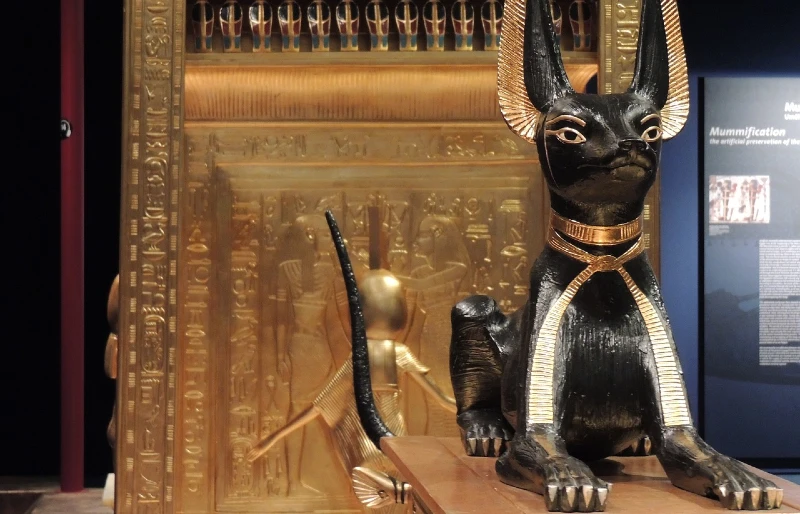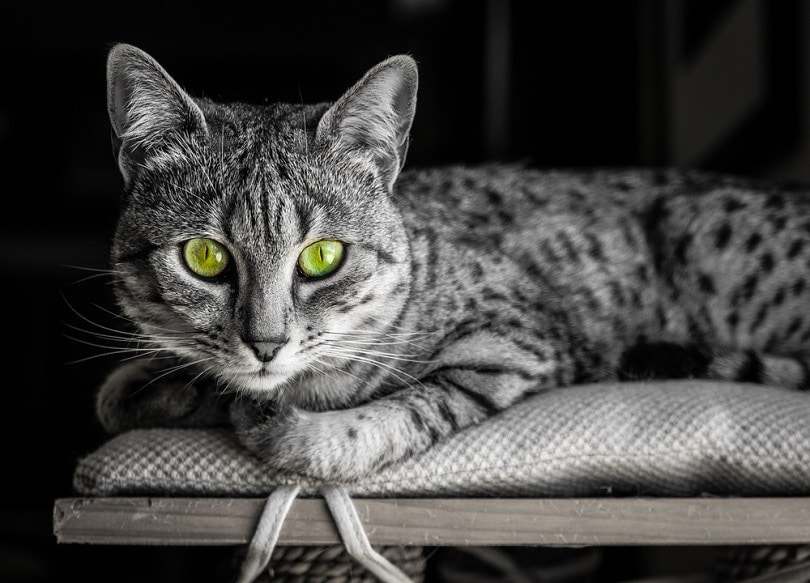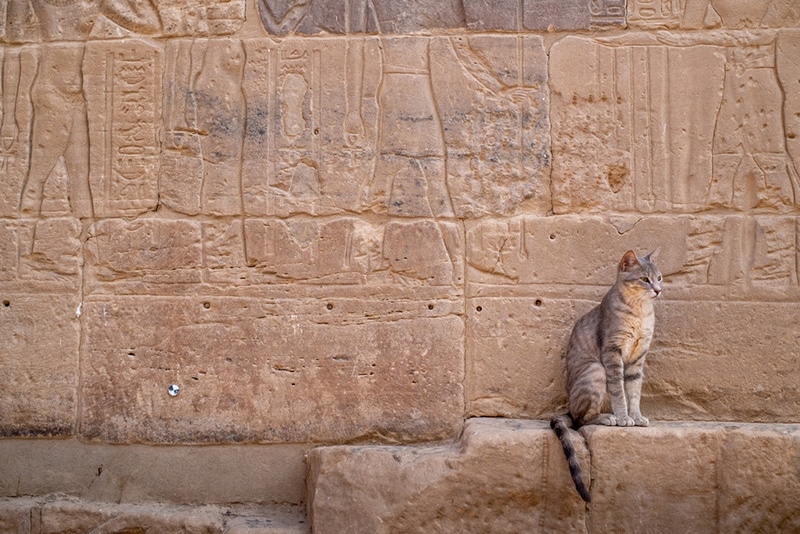
Ancient Egypt existed from 4000 BC through the 7th century AD. Though long gone, it continues to fascinate us, helped in part by the mountain of archaeological evidence unearthed through the years. You may associate it with mummies, pharaohs, and pyramids. However, another connection exists that even permeates our world today: the Egyptians’ relationship with cats.
We may love our feline companions, but it’s hard to put it on par with the outward expressions of devotion and reverence that mark this period. We can even go so far as to say that we owe the Ancient Egyptians a ton of gratitude for their role in ensuring we have cats as pets today.
The 15 Facts About Cats in Ancient Egypt
1. The Egyptians Didn’t Worship Cats the Way You May Think
Many people think that the Egyptians worshipped cats. They indeed held them in high regard as demi-deities sacred to the gods and goddesses. They also recognized their hunting prowess and usefulness in dealing with rodents and other pests. These emotions are apparent in the art recovered from the era.

2. The Egyptians Adorned Their Felines With Fancy Collars
We think of leashes and collars as modern-day innovations. However, the Ancient Egyptians were way ahead of the game, adorning their feline companions with collars made of gems, beads, and stones. They may have served a practical purpose. However, there’s no denying the adoration these people had for their beloved pets.
3. The Goddess Bastet Is an Example of the High Regard Ancient Egyptians Had for Cats
Fashioning art and statues is one thing. It’s quite another to depict a goddess in feline form. The Goddess Bastet is a familiar sight, with her head of a cat and the body of a human. She was the protector of agriculture. The depiction is fitting, given these animals’ role in controlling pests. She also brought good health and pleasure, which is another testament to the feelings these people had for cats.

4. The Egyptians Believed Cats Had Dual Personalities
Cat owners may relate to this fact about felines as the Egyptians viewed them. They saw these animals as being everything that Bastet embodied. However, there was—and is—that other side of the fierce, independent hunter on the prowl. It is the essence of the dual personality we often associate with felines. After all, cats are more in touch with their wild side than we may realize or appreciate.
5. The Most Well-Known Depiction of the Feline Form Is the Great Sphinx of Giza
The Great Sphinx of Giza is as mysterious as it is awe-inspiring. Archaeologists estimate the people built it around 2520 BC. It sits with the head of a pharaoh and the body of a lion. The honor of cats is unmistakable, although little is known about the structure. The pyramids are like time capsules, capturing the feelings, art, and religion of an ancient time the people shared with felines.

6. The Egyptians Mummified Their Beloved Felines So They Would Join Them in the Afterlife
The practice of mummifying humans is well-known. The purpose was to help the departed on their journey to the afterlife. Happiness may have been impossible for many without their animal companions by their side. The Ancient Egyptians mummified cats and other animals, including dogs and monkeys. The careful preservation is apparent.
7. Egyptians Mourned Their Departed Feline Companions by Shaving Their Eyebrows
Many cultures mourn their dead publicly. Westerners often wear black to symbolize their loss and the gaping hole that remains in one’s heart. Others cut their hair. The Egyptians shaved their eyebrows. It’s a bold gesture that speaks volumes of the grief of losing a beloved pet. Perhaps its purpose is also to show the importance of cats in the lives of these people.

8. The Egyptians Built the Oldest Known Pet Cemetery
In 2021, archaeologists unearthed what may be the first known example of a pet cemetery dating back to the 1st and 2nd centuries AD. The scientists recovered the remains of 585 animals, including 536 cats. Monkeys and dogs were among the findings. Interestingly, they were not mummified. Instead, they were carefully wrapped.
9. The Egyptian Word for Cat Is “Miu”
We have several words to describe cats. The Egyptians had just one: miu. If the spelling looks familiar, it may be because it is a phonetic description of the sound these animals make, a fitting tribute. Interestingly, meow is a sound cats usually make when around people. Felines typically don’t use that vocalization among themselves.

10. The DNA Ancestor of Modern Domesticated Cats Was the African Wild Cat (Felis silvestris lybica), a Common Feline Throughout Africa
Small cats were plentiful around the area of Ancient Egypt that scientists recognize as the Fertile Crescent. It was the dawn of agriculture and, thus, civilization. Rodents followed the bounty of grains, attracting cats with them. The feline that endeared itself to the Egyptians was the African Wild Cat. DNA evidence has shown that our pets arose from this single species.
11. The Domesticated Cat Has Changed Little Genetically From Its Middle Eastern Ancestor
We talk about how our pets are closer to their wild side. You’d think they’d undergo profound changes through the thousands of years since domestication. Yet, our feline companions differ by only 13 genes from natural selection. You might be hard-pressed to distinguish an African Wild Cat from Ancient Egyptian times from our animal companions today.

12. A Second Domestication Event Occurred During the Time of the Egyptians, Leading to Their Worldwide Presence
Many scientists credit the Egyptians with influencing the cat’s evolution to become what they are today. Some theorize these people may have spurred a second domestication event because of their popularity. It’s worth noting some of the changed genes in domesticated animals involve areas of the brain affecting aggression. The Egyptians helped make our kitties more lovable and friendly.
13. The Cat the Egyptians Domesticated Is One of Five Subspecies
We spoke of the African Wild Cat as our pets’ ancestors. This animal was one of five subspecies of the Wild Cat. Geographical separation fostered the evolution of separate types. The Egyptians may have honed in on the friendlier disposition of the African Wild Cat and set the stage for them to become pets worldwide.

14. People Transported Cats From Egypt to Southern Africa to Europe and Eastern Asia Before Reaching North America
Trade and transportation were important in Ancient Egypt. Given their disposition and usefulness, it’s not surprising that cats would find homes elsewhere. The home range of the African Wildcat reflects this fact, with populations in southern Africa, Europe, and Asia. Eventually, felines crossed the pond to find their way into the heart of the North American people.
15. The African Wild Cat Is a Species of Least Concern
The African Wild Cat is just as resilient as it was in Ancient Egypt. While its exact numbers aren’t known, the International Union for Conservation of Nature and Natural Resources (IUCN) lists it as a species of least concern. A part of Ancient Egypt will continue to live with us and remind us of this animal’s unique story.

Conclusion
The Ancient Egyptians had a special relationship with cats that’s evident in all aspects of their culture. They also ensured a legacy of an animal dear to our hearts. The people were way ahead of us in many ways. It almost seems as if we were destined to bring cats into our homes and make them members of the family.
Featured Image Credit: Youssef Abdelwahab, Shutterstock





